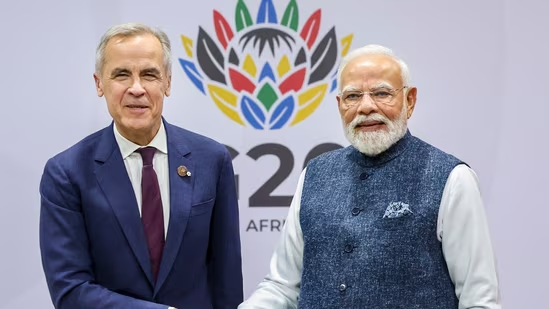In a significant stride towards strengthening bilateral relations, India and Canada have recently reiterated their commitment to deepening strategic and economic ties, setting an ambitious target of boosting two-way trade to $50 billion by 2030. This renewed focus marks a pivotal moment, aiming to unlock the vast untapped potential between two vibrant democracies with shared values and complementary economies. The pledge signals a proactive approach to fostering robust partnerships, moving beyond previous diplomatic nuances to forge a path of mutual growth and cooperation.
Forging Economic Pathways: The $50 Billion Vision
The $50 billion trade target by 2030 represents a substantial leap from the current trade figures, which stood at approximately $8.2 billion in merchandise trade in 2022-23. Achieving this ambitious goal will necessitate a multifaceted approach, focusing on identifying and leveraging key sectors where both nations hold a competitive advantage. For India, this translates into expanded markets for its burgeoning IT services, pharmaceuticals, textiles, and agricultural products. Conversely, Canada offers India critical resources such as energy (especially crude oil and natural gas), fertilisers, pulses, and advanced technologies in mining, clean energy, and aviation.
Discussions around a Comprehensive Economic Partnership Agreement (CEPA) or an Early Progress Trade Agreement (EPTA) have gained renewed momentum. Such agreements are crucial in reducing tariffs, streamlining customs procedures, and addressing non-tariff barriers, thereby creating a more predictable and conducive environment for businesses on both sides. India’s rapidly growing consumer market and its position as a global manufacturing hub present significant opportunities for Canadian businesses looking to expand their footprint in Asia. Similarly, Canada’s advanced technological base and resource wealth offer immense potential for India’s industrial and energy security needs. The vision extends beyond mere goods, encompassing services, investments, and intellectual property.
Beyond Trade: Strategic Alignment and People-to-People Connect
While economic targets form the backbone of this deepened relationship, the scope of cooperation extends into strategic alignment and robust people-to-people connections. Both India and Canada share democratic principles and a commitment to a rules-based international order, making them natural partners in addressing global challenges. Canada’s increasing focus on the Indo-Pacific region aligns with India’s Act East policy and its role as a key player in regional stability and economic growth. Collaborations in areas like climate change, renewable energy, and sustainable development can yield significant benefits, pooling expertise and resources for innovative solutions.
The substantial Indian diaspora in Canada plays an indispensable role as a living bridge between the two nations. Comprising entrepreneurs, professionals, academics, and skilled workers, this community fosters strong cultural and business linkages. Educational exchange programs, joint research initiatives, and increased student mobility further enrich this bond. Indian students frequently choose Canada for higher education, contributing significantly to its economy and intellectual landscape. This human connection translates into increased understanding, trust, and a natural preference for bilateral engagement, creating a fertile ground for both trade and diplomatic cooperation.
As Ms. Priya Sharma, a trade analyst specializing in Indo-Canadian relations, recently observed, “The $50 billion target is ambitious but achievable, provided there is sustained political will and proactive engagement from the private sectors of both countries. It requires more than just agreements; it demands a continuous dialogue on market access, regulatory harmonisation, and investment promotion.” Her insights underscore the effort required to translate political commitments into tangible economic outcomes.
Navigating Challenges and Realizing Potential
Achieving the $50 billion trade target will not be without its challenges. Issues such as regulatory hurdles, logistical complexities, and occasional geopolitical sensitivities require careful navigation. However, the renewed commitment from both governments signifies a mutual desire to address these complexities proactively. India’s economic resilience and Canada’s resource-rich economy provide a strong foundation for growth. Furthermore, both nations are keen to diversify their supply chains and reduce dependencies, making a stronger bilateral relationship strategically advantageous.
The path ahead involves persistent dialogue, robust policy frameworks, and active participation from businesses and industry stakeholders. India and Canada have a shared interest in fostering a global environment conducive to open trade and investment. By focusing on areas of mutual strength and leveraging their respective advantages, the commitment to deeper ties and the ambitious trade target by 2030 represents a significant chapter in the evolving narrative of their bilateral relationship, promising prosperity and strategic alignment for both nations.




